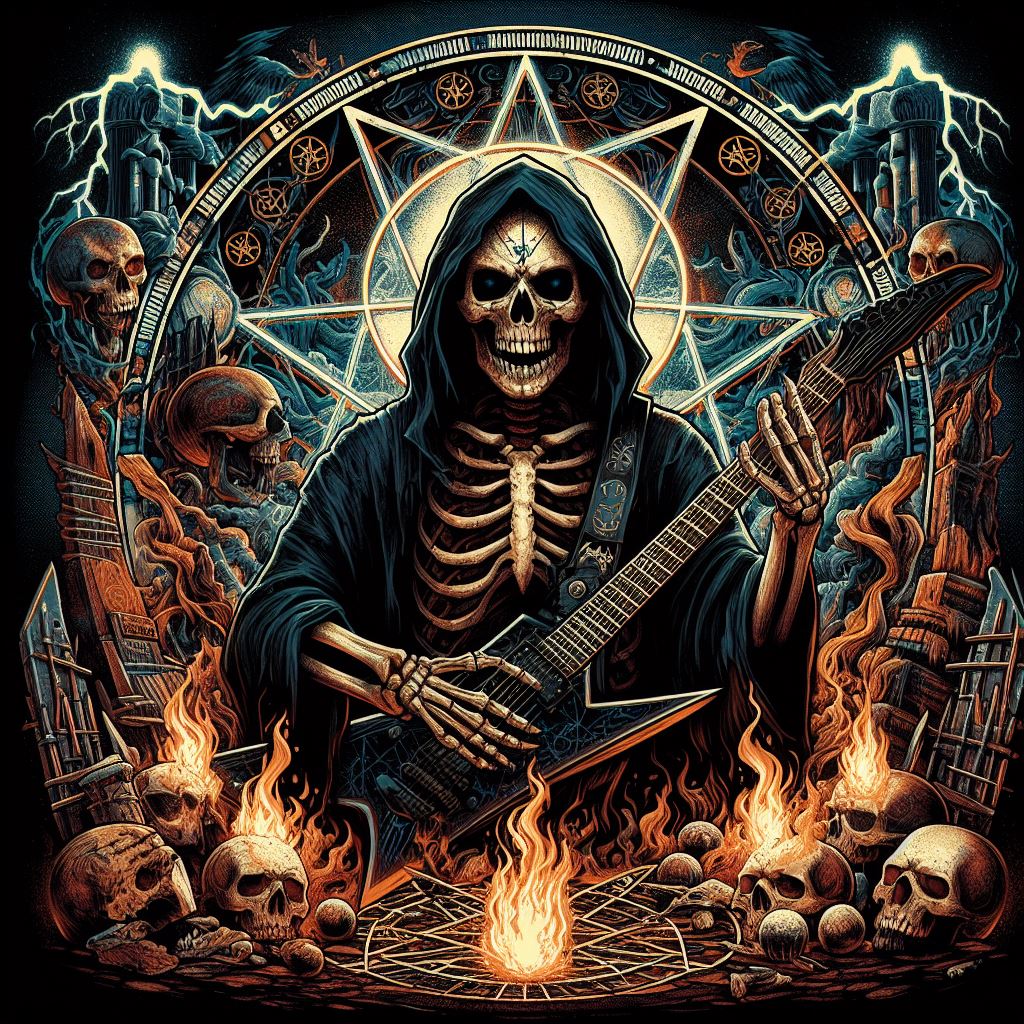By Fire and Sword (BFAS) isn’t just a metal band; it’s a cultural phenomenon in Poland. Formed in Białystok in 1998, they’ve woven a tapestry of Polish history, folklore, and martial spirit into their music, captivating audiences worldwide with their unique brand of folk metal. Here’s a look at their journey:
Rooted in History: From Folk Influences to Metal Majesty (1998-2002)
By Fire and Sword’s story begins with the vision of frontman Adam “Ogniwo” Nergal Darski and guitarist Paweł “Pavulon” Mizerkiewicz. Both passionate about Polish history and folk music, they sought to create a band that resonated with their national identity. Influenced by folk giants like Percival and metal titans like Iron Maiden and Bathory, they formed BFAS in 1998.
Their early demos, “Molon Labe” and “Pięść i Topór” (Fist and Axe), showcased their blend of traditional Polish instruments like lutes and flutes with the power of electric guitars and driving drums. Songs like “The Ballad of Rudy Koper” and “Black Banners Wave” explored historical events and legendary figures, sparking interest from the Polish underground metal scene.
A Defining Debut: “Stalowy Las” (Steel Forest) and International Recognition (2002-2004)
By Fire and Sword’s breakthrough arrived with their debut album, “Stalowy Las” (Steel Forest), released in 2002. This album cemented their sound, featuring galloping rhythms, soaring vocals from Nergal, and the dynamic interplay between folk instruments and metal instrumentation. Tracks like “The Sleeping Sword” and “Under the Black Eagle” resonated with Polish audiences, becoming anthems that celebrated their nation’s rich and often turbulent history.
“Stalowy Las” also caught the attention of international metal fans captivated by the band’s unique sound. BFAS embarked on their first European tour, bringing their electrifying live performances to new audiences. Their stage presence, complete with traditional Polish attire and historical imagery, further solidified their identity as a band deeply rooted in their heritage.
A Peak in Power: “Wojenny Album” (War Album) and the Rise of Folk Metal (2004-2008)
By Fire and Sword’s success continued with their critically acclaimed follow-up, “Wojenny Album” (War Album), released in 2004. This album explored the darker side of Polish history, with tracks like “The Battle of Oliwa” and “The Cossack Horde” delving into the nation’s struggles against invaders. Musically, the album displayed a further refinement of their sound, showcasing their songwriting prowess and their ability to seamlessly blend history with heavy metal energy.
“Wojenny Album” coincided with the growing popularity of folk metal worldwide. By Fire and Sword, alongside bands like Finntroll and Korpiklaani, emerged as leaders of this burgeoning subgenre. They headlined major European festivals and shared stages with established metal acts, further amplifying their international presence.
A Turning Point: Artistic Evolution and Lineup Shifts (2008-2014)
The band’s success wasn’t without challenges. Internal tensions and the departure of key members like Paweł “Pavulon” Mizerkiewicz led to a period of artistic evolution. Albums like “Matahari” (2008) and “Krużen Szabel” (Circle of Sabers) (2011) showcased a more progressive approach, incorporating Eastern European influences and a broader exploration of historical themes.
While these albums garnered praise for their ambition, they also alienated some fans who craved the more traditional folk metal sound of their earlier work. Despite these changes, By Fire and Sword remained a dominant force in the Polish music scene and continued to attract new audiences worldwide.
A Return to Roots and Renewed Vitality (2014-Present)
The 2014 release of “Koncept: 1794” marked a return to By Fire and Sword’s roots. This concept album focused on the Kościuszko Uprising, a pivotal rebellion against Russian rule. The album’s focus on Polish history and the return of a more traditional folk metal sound resonated with fans, both old and new.
Subsequent albums like “Pán Mroku” (Lord of Darkness) (2018) and “Złoty Rog” (Golden Horn) (2022) further solidified this trajectory. They continued to explore historical themes, delve deeper into Polish folklore, and maintain their position as a leading light within the folk metal scene.

Leave a Reply
You must be logged in to post a comment.